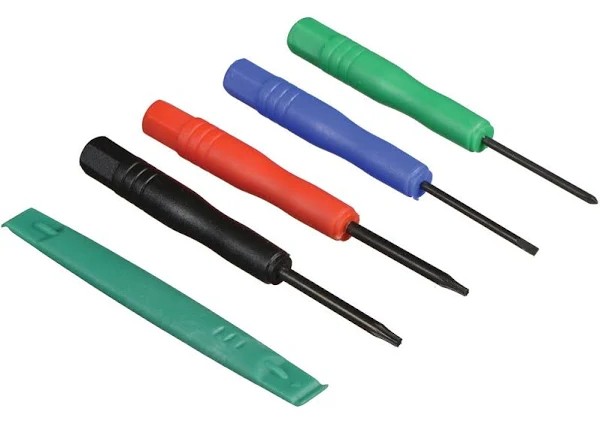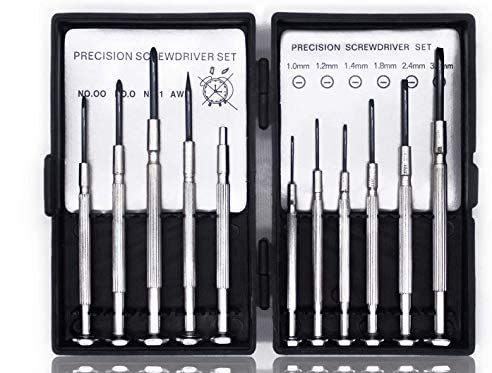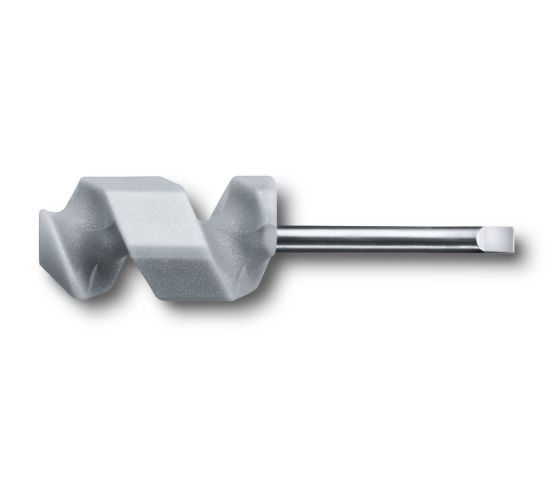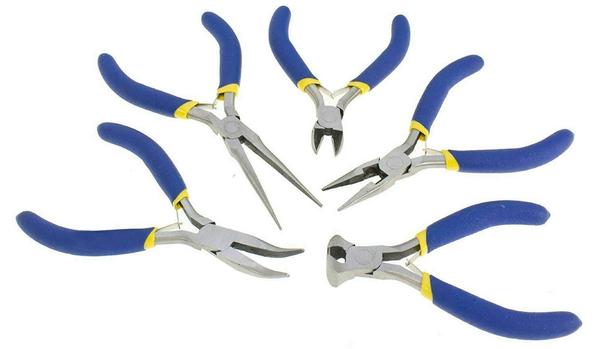A friend of mine asked me for suggestions for the contents of a small repair/utility kit to place in a locker at his office. In his own words, he wants to be “the handy guy”.
Every time I have moved office, I have virtuously left my tool collection for my successor, (not that I had much choice in the matter last time!) Each time I have regretted this, as over the next few months I have needed tools I no longer have.
What to have in such a kit will depend on the office, and the sort of equipment likely to be encountered.
I once returned to my office to find a pair of colleagues attempting to help someone remove a finger-ring. I quickly confiscated the hacksaw(!) and demonstrated that a needle-file was the correct tool for the job.
A dearly missed friend of mine was a craftsman of the old school. He brought the best tools he could and they served him well for his entire lifetime. Good job he was cremated, since he would turn in his grave at my next suggestion!
Bear in mind the likely frequency of use of your office tool kit. For items that are only likely to be used occasionally, it may be warranted to acquire some of these items from “budget” sources.
Images are for illustration only! No recommendation of particular brands or models should be inferred.
Office Folders
My starting point for an office tool kit would be to find a penknife and/or multi-tool.
If you are a regular visitor to these pages, chances are you already carry a number of useful items as part of your EDC.
It is also possible that you have a couple of older items that you have replaced with something better and more suited to your needs. You may have brought yourself a full-sized multi-tool, only to decide it is too heavy for constant carry and your needs are better served by something such as a Swiss Army knife and a mini-Leatherman Squirt.
In my kitchen drawer I have a couple of penknives donated from lost property. One is large and bulky and includes a set of pliers. Both penknives hang on a hook in the drawer and are useful for tasks such as tightening cooking pot handles.
If you have a surplus penknife and/or multi-tool, make this the starting point of your office tool kit.
Screwing in the Office
The next addition would be some “proper” screwdrivers.
There are some places that the screwdrivers on a penknife or multi-tool cannot reach, or are too big for. If you have to remove a number of screws, or they are hard to remove, conventionally handled screwdrivers may be more comfortable and effective.
Items such as phones or laptops tend to use quite small screws. You may encounter cross/Phillips/posidriv or Torx-headed screws.
Have a set of several small screwdrivers of approximately 3 to 5mm width for the flat heads, and the other types of similar size, such as PH/PZ 0 to 2.
As an aside, the very small screwdriver that fits in the corkscrew of a Swiss Army knife is worth acquiring for your EDC. I once saw someone’s glasses fall to bits while they were talking to me in a pub. I repaired them there on the spot.
You should also have at least one fairly hefty large slot screwdriver.
Recently an important keycard was left in a cabinet and the key-holder was absent with Corvid. I was told to get into the desk by any means possible. Unable to pick it with the tools I had, I used a large screwdriver as a wedge and prybar and opened the drawer with negligible damage.
Having a crowbar at work might raise eyebrows. A large screwdriver or two is more acceptable and in many respects more versatile.
Pinching in the Office
Next I would add a set of pliers. By “set” I mean a kit containing several pairs of different forms, for example fine, long-nose, curved, broad and side-cutters.
These are for all the jobs the pliers on a penknife or multitool are not ideal for.
Insulated handles are nice to have, although you should not be working on anything with live electricity.
A number of times I have been called on to repair colleagues’ jewellery.
I have a nice little set of five tools, each about four to five inches long. I picked these up in a model-railway shop.
These are backed up by a pair of heavier duty long-nose and standard pliers of about six to seven inches long.
○ Precision screwdrivers and fine pliers would be among the first tools I acquire for an office tool kit.
Nuts Loose in the Office
It is probably not your job to fix the sink. Even if you do actually know what you are doing, there are numerous good reasons why this should be left to someone paid to do the job.
You may, however, come across loose nuts on furniture in an office environment.
Your tool kit should have a set of Mole grips or an adjustable wrench for such contingencies.
Cuts in the Workplace
In this day and age, the sight of a penknife blade may cause some of your colleagues to soil their underwear.
A Stanley knife/box-cutter may be a more acceptable tool should you need to cut open packaging.
More assaults are probably committed with Stanley knives and box-cutters than penknives, but hoplophobia is not rational.
Tape It!
Final component of the basic kit would be a roll of duct tape and a roll of electrician’s insulating tape.
Additional Items
• Reorganizing is a popular distraction in offices. Will the desk fit? I am often asked if I have a tape-measure.
• Sometimes items using Allen screws are encountered, so a small set of Allen/hex keys might be handy.
There is a joke that Mole grips or duct tape are for things that move that shouldn’t, and that WD40 is for what won’t move but should!
• WD40 is handy for a number of things in the office. As well as being a lubricant, it can be used for cleaning.
• Modifying your office environment with a hammer will probably be frowned on. It may prove tempting next time the printer or photocopier plays up!
As a starting point for your office tool kit, you may have used a pre-made home kit, such as the one shown below, which includes a hammer. A claw hammer does make a useful substitute for a prybar.
• A magnifying glass may be useful for dealing with those tiny screws.
• A magnet is good for finding any screws you drop or keeping removed screws going astray.
• If working with small parts, tweezers may be handy. So too might a plastic “spudger”. You can probably carve the latter from the less-brittle examples of plastic cutlery.
• I am inclined to suggest a small flashlight might be a handy addition. My step-son will probably just point out that most people have phones with lights.
Whatever you decide upon, keep your tool kit under lock and key. Useful things like tools have a habit of getting borrowed and not returned.
Other Utility Items for the Office
My friend said tool/utility, so what else might he want in his locker? His EDC should cover most of his needs.
No idea about my friend’s current lifestyle. He may still enjoy a wild night out on the tiles. He might want a toothbrush, toothpaste, a razor and deodorant in his locker.
Female readers may wish to keep a supply of hygiene items.
Your place of work should have a stock of medical items, but you may maintain a supply of personal medication, and other items such as your preference in painkillers and anti-histamine, for example.
Spare clothing, such as clean underwear, warm hat, bandana, scarf, gloves, jumper and a poncho/rain-proof. A spare lighter and a space blanket is always prudent.
This is venturing into the topic of “get home” bags. That is a topic for another day.







